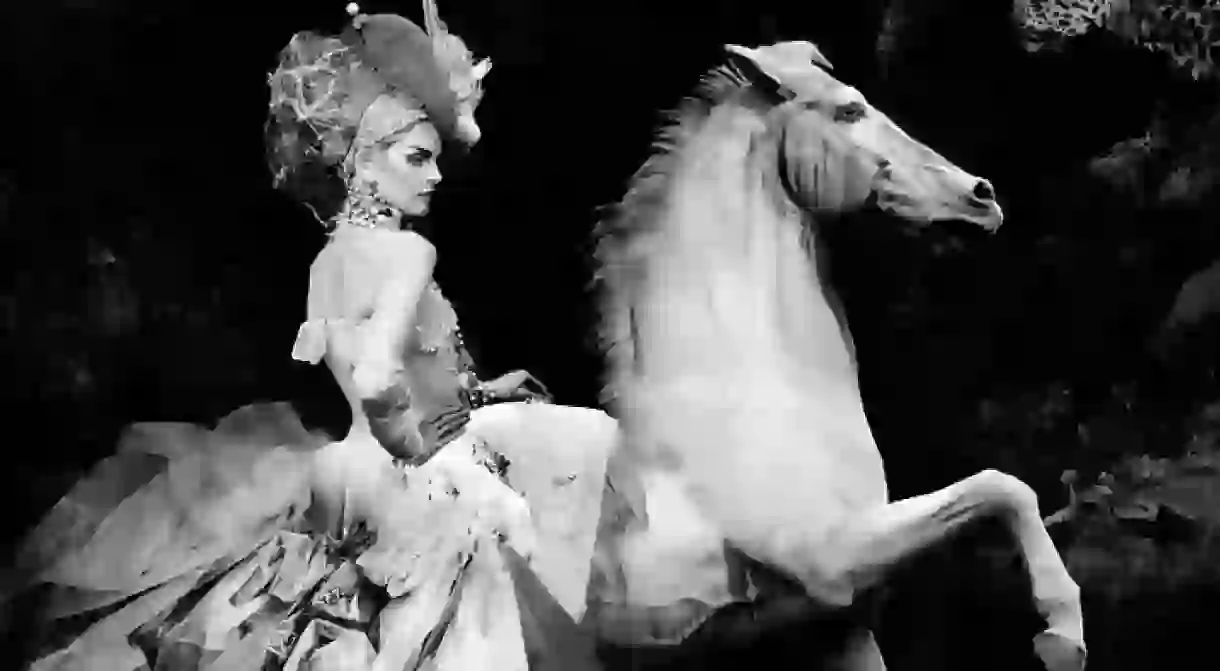How Christian Dior Revolutionized Fashion In Only 10 Years

With his debut haute couture show in 1947, Christian Dior achieved the twin feats of single-handedly redefining women’s style after years of war and restraint and re-establishing Paris as the center of the fashion universe. Needless to say, he was an overnight sensation. Throughout the next ten years, the portly Frenchman dressed movie stars and royalty and revolutionized the way in which his industry did business. This is his life story in four bite-sized chapters.
Dior Before the House of Christian Dior
Dior was born into a wealthy family from the Normandy coast in France in 1905. His father, a successful fertilizer manufacturer, wished for his second son to go into a life of diplomacy. Fighting his creative urge, the young Dior entered the École des Sciences Politiques. However, upon his graduation in 1928, the pull of the arts was too strong. His father relented and financed the creation of a small gallery in which he showed the likes of Georges Braque, Pablo Picasso, Jean Cocteau, and Max Jacob. All this ended in 1931 when, as a result of the Great Depression, the family’s fortune faltered. To make ends meet, Dior sold his fashion sketches on the streets of Paris and, fortunately, in 1938 he was offered a job with the designer Robert Piguet. His career was again disrupted shortly after, this time by the outbreak of war. Dior served in the south of France before the nation’s surrender in 1940. He returned to the capital and worked for Lucien Lelong alongside Pierre Balmain, designing dresses for the wives of Nazis and French collaborators.
1947 – The New Look and a New Beginning
The end of World War II was a moment of rebirth for Dior. In 1946, Marcel Boussac, then the richest man in France due to his textile empire, offered the designer the job of reviving the Philippe et Gaston fashion house. Dior refused, insisting that he begin designing under his own name. Boussac agreed, and work began on the legendary 1947 collection. Originally conceived as two lines entitled Corolle (after the term for a circle of flower petals) and Huit (for the rounded shape of the figure eight), it went down in fashion history as simply the New Look thanks to the exclamation of Harper’s Bazaar’s editor-in-chief, Carmel Snow. The collection was characterized by cinched waists, full skirts and an extravagant use of fabric that contrasted sharply with the sober styles of the ration era. It was intended as a celebration of femininity and the return of luxury.
Fame and the ’50s
Dior and his business partner Jacques Rouet established license agreements in the fashion industry. With deals on fur, stockings, and perfumes, the pair generated huge revenues and the designer became a household name. Miss Dior, the brand’s first and most famous fragrance, was named after Dior’s sister Catherine, a fighter in the Resistance, and launched with immediate success in 1947. By the end of the decade, the house accounted for three-quarters of Paris’ fashion exports and 5% of France’s total export revenue. Each of Dior’s collections through the 1950s followed a particular theme. For example, the Tulip line of 1953 was typified by floaty, floral prints, and two years later the A-Line collection showed a new silhouette whereby the skirt widened out over the hips and legs to resemble a capital A. Dior’s popularity was unrivaled across Europe and the United States. His notable clients included Princess Margaret and the Duchess of Marlborough in the UK and Hollywood stars like Ava Gardner and Marlene Dietrich.
1957 – The End and A New Beginning
By the time of the fashion house’s 10th anniversary, it had sold more than 100,000 garments and was bringing in an annual revenue of $20 million. Christian Dior was a global phenomenon, appearing on the cover of TIME on March 4th, 1957. Seven months later, on October 23rd, Dior died of a heart attack while on holiday in Montecatini, Italy. This was his third, and accounts differ as to its cause. Some say it was brought on by choking on a fish bone, others blame a game of cards or a fit of lovemaking. Boussac sent his private plane to bring the body of the 52-year-old back to Paris. A congregation of 2,500 people, including his entire staff and many of his famous clients, gathered for his funeral. His death led to chaos. The closure of the company was considered for a time but ultimately deemed too damaging to the rest of the French fashion industry. Instead, the 21-year-old Yves Saint Laurent was promoted to Artistic Director of the house he had joined just two years earlier. And the rest, let’s just say, is a fashion legend for another time.













